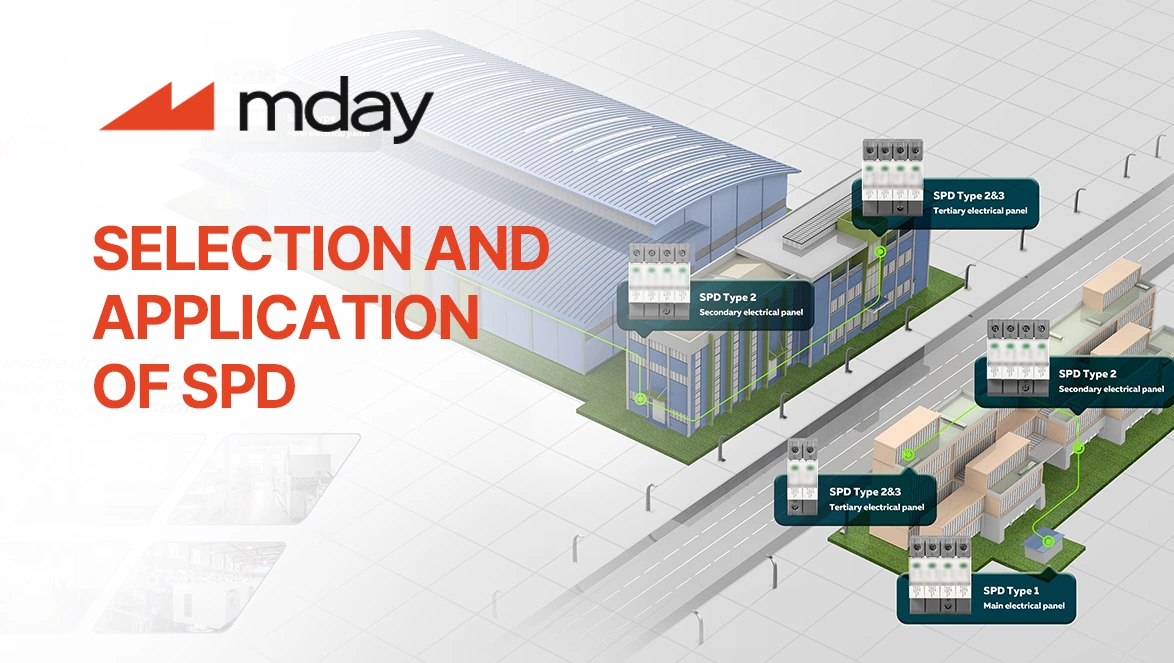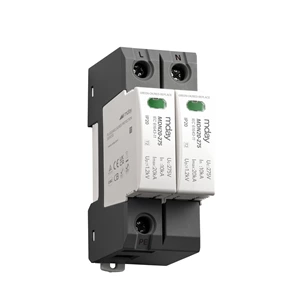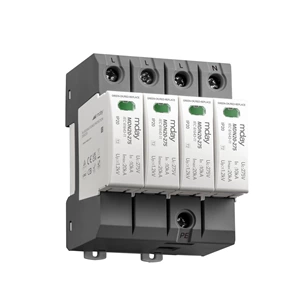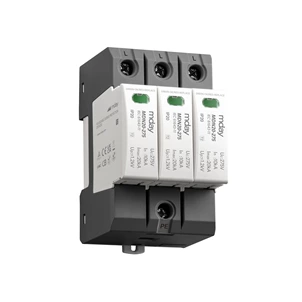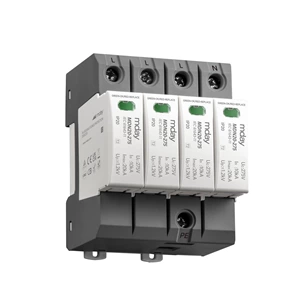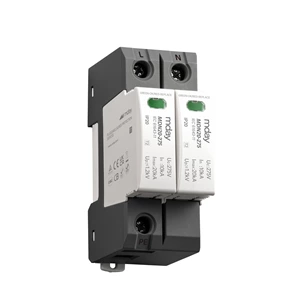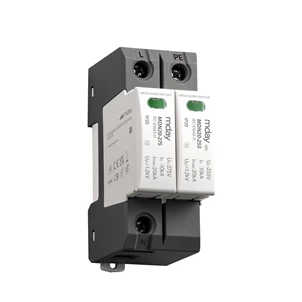Selection And Application Of Surge Protector
[Lightning protection] Selection and application of surge protector
Mday's main product voltage protector (SPD), is an important device used to protect electrical equipment from sudden voltage surges or overvoltages in the power system. The power supply system is affected by lightning strikes and overvoltages externally, and by the opening, closing, restarting, and short-circuit failures of large-capacity equipment and frequency conversion equipment internally, which will generate transient overvoltages and bring increasingly serious surge problems. All electrical equipment has an allowable voltage range for the power supply, and sometimes a small overvoltage shock can cause serious damage to the equipment, especially some sensitive microelectronic devices.
When choosing a lightning surge arrestor, there will be different types of products such as 1P, 1P+N, 2P, 3P, 3P+N, and 4P. "P" is a professional term for low-voltage electrical appliances, and the abbreviation of "Pole" in English, which means the number of poles. Under different power supply systems, the purpose, wiring, price, etc. of surge protectors (SPDs) are different. Therefore, it is very important to understand the purpose and selection of various types of SPDs.
lightning surge arrester can provide overvoltage protection for various electronic devices, instruments and communication lines. When a spike current or voltage suddenly occurs in an electrical circuit or communication line due to external interference, the surge protector can also conduct and shunt in a very short time, thereby preventing the surge from damaging other devices in the circuit. Due to the different power demand in different scenarios, various power supply systems have been derived. In addition to the single-phase system, there are also TT systems, TN-C systems, TN-S systems, etc. Therefore, different models of surge protectors have also been developed to correspond to these power supply systems.
surcharge protector (SPDs) can be connected between L (phase line), N (neutral line), and PE (protective line), such as L-L, L-N, L-PE, and N-PE, which are related to the grounding type of the power supply system. In GB/T18802.12-2014, 3.1.30 defines the standard protection mode: SPD protection elements can be connected between L (phase line; also called live wire), N (zero line; also called neutral line), and PE (protection line), that is, relative phase, relative neutral line, relative ground, neutral line to ground and their combinations (L-L, L-N, L-PE, N-PE), that is, the current path of the protected components is protected between the terminals. These connection methods are called protection modes.
There are three common protection modes for power surge protectors (SPDs): common mode, differential mode, and full protection mode. Among them, differential mode and common mode are realized based on different appearance forms of surges and transient voltages. Differential mode protectors provide asymmetrical protection for the lines of electrical equipment, while common mode protectors provide symmetrical protection for the lines. Full mode surge protectors are a combination of differential mode and common mode protection modes, which can protect all modes in the lines of electrical equipment.
Common mode
Refers to the protection mode in which the protection module is connected between the phase line and the protection line (L-PE) and the neutral line and the protection line (N-PE). There are 3~4 modules for three phases. The common module protects the insulation of the circuit and the device to the ground in the equipment.
Differential mode
Refers to the protection mode in which the protection module is connected between the phase line and the phase line (L-L) or between the phase line and the neutral line (L-N). It protects the circuit and the device itself between the two input ends of the equipment; the differential module connected between the phase line and the phase line protects the device connected between the phase line and the phase line in the equipment.
“3+1” mode
Three phase-to-neutral (L-N) modules are differential mode modules, and one neutral-to-protective line (N-PE) module can be attributed to the common mode mode. In the “3+1” connection method, each phase-to-ground (L-PE) protection is realized by the differential mode module and the gap module.
Full protection mode
Refers to both common mode and differential mode. The so-called full protection mode usually requires seven modules for three phases, excluding phase-to-phase modules. The advantage of a full-mode surge protector (SPD) is that it protects all possible lines through which surge currents pass.
